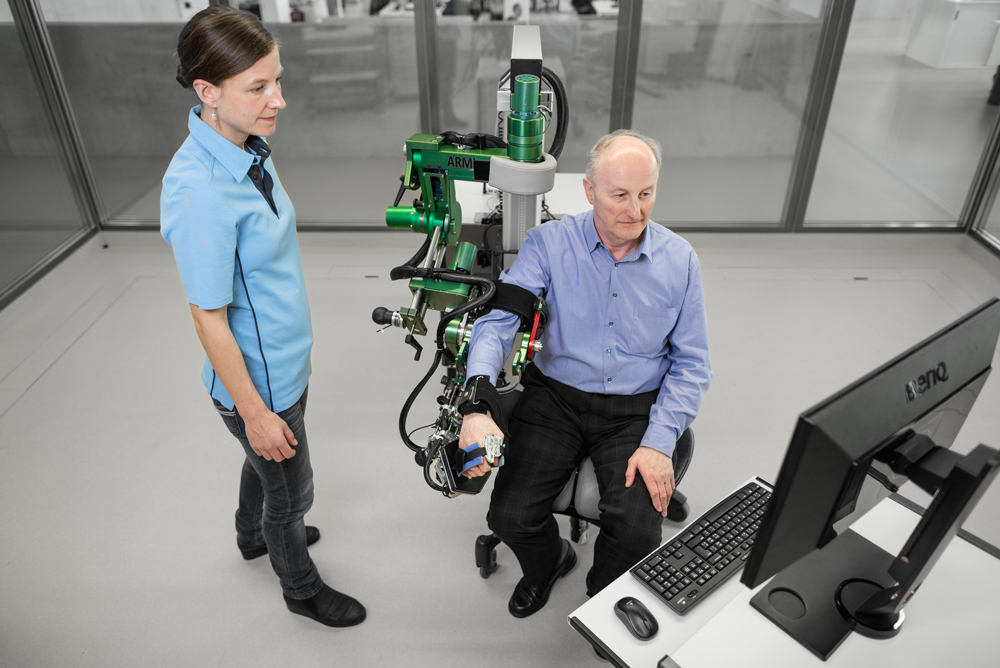ARMin V
Robots are applied in therapy of stroke patients to restore lost motor function. Over the past years, the use of robots in therapy has been constantly increasing: Robots enable high intensity training through an increased training duration and a large number of movement repetitions, while the therapists are relieved from physical work.
In this project, we want to develop new therapy concepts that will increase the usability of the ARMin robot for the therapist. In return, these new concepts are believed to tailor increased therapy outcomes.
Involved People
Despite all technical features of rehabilitation robots and all efforts to push limits of robot-aided therapy, there remains a major drawback. While conventional arm therapy allows therapists to directly interact, therefore feel and continuously adapt the amount of support to the patients’ needs, current robot-aided therapy with ARMin requires therapists to define the amount of support prior to training. During training, support may be automatically adapted by dedicated control strategies. However, it is questionable whether automated adaptation of support can be as efficient for rehabilitation purposes as continuously adapted support provided by a human therapist. If therapists want to modify the robotic support during ARMin therapy, training has to be stopped, new support parameters must be set, and the robot has to be restarted. Also, immediate manual interventions by the therapist are interpreted by the robot as external disturbances. To our knowledge, there is no rehabilitation robot available so far that allows the therapist to manually teach the robot how and where to apply support online for the currently trained task. We will enable the therapist to intervene intuitively by applying external forces to the rehabilitation robot in order to adapt the amount of support applied by the robots e.g. when the patient progresses in performance over time and consequently needs less support to complete the task.
